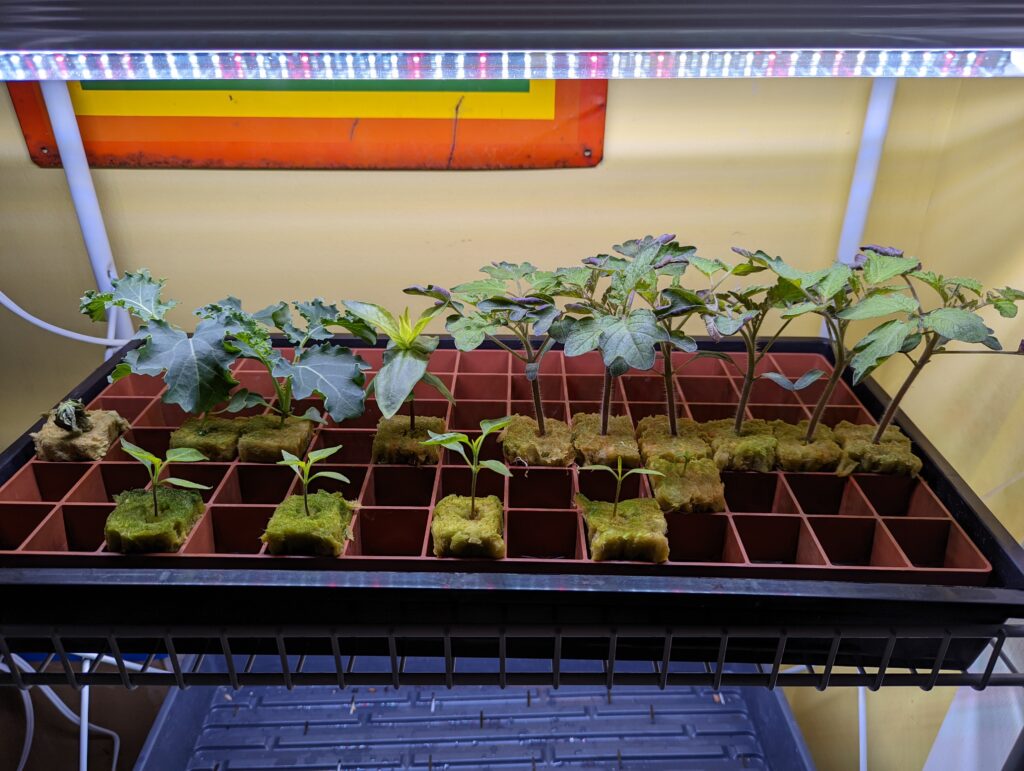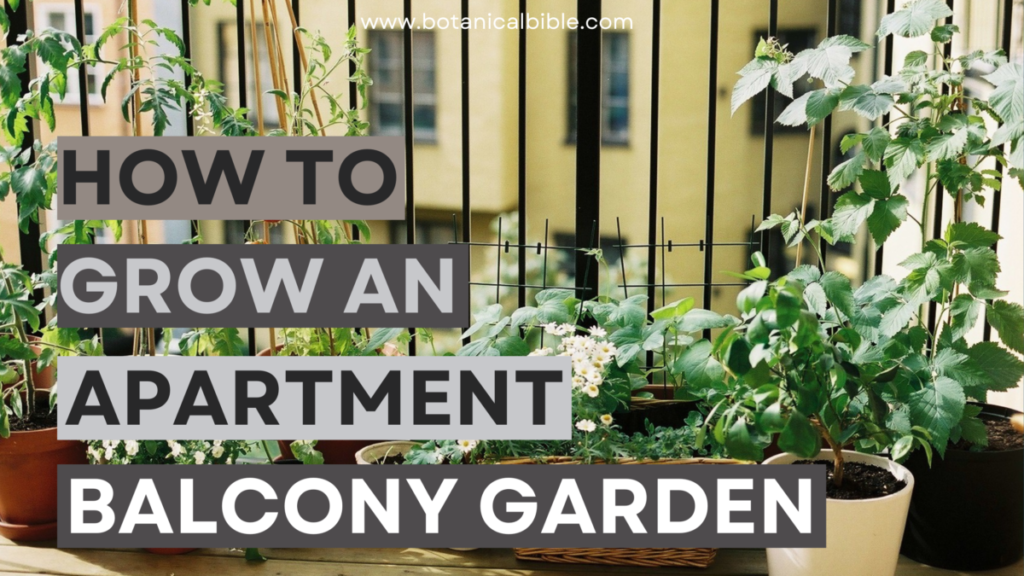Hey there, fellow urban gardeners! If you’re living in an apartment, you might think that growing fresh vegetables and herbs is impossible. But fear not! Balcony gardening has gained popularity in recent years, and for all the right reasons. Not only is it a sustainable way to have fresh produce at home, but it also provides a host of health benefits, such as eating healthier and improving the overall quality of life. There’s nothing quite like the satisfaction of walking out to your vegetable garden and picking fresh herbs or harvesting tomatoes that you’ve grown yourself.
Introduction to Balcony Vegetable Gardening
One of the biggest advantages of balcony gardening is the control you have over the environment. You get to choose the type of soil, fertilizer, and pest control methods, ensuring that your vegetables are grown in a way that aligns with your values and preferences. In this blog post, we’ll cover the basics of growing vegetables on a balcony, including container and plant selection, soil preparation, and tips for maximizing space and ensuring healthy growth. Whether you’re a seasoned gardener or a complete beginner, you’ll find plenty of helpful information and inspiration to get started on your own balcony garden.
Planning your Vegetable Garden
Before you get your hands dirty and start planting, it’s crucial to spend some time planning. Yeah, I know it might sound like a drag, but trust me, it’ll be worth it in the end. Planning helps you figure out what kind of plants will thrive in your garden and how much you can grow.
Now, one of the essential things to consider is the amount of space and sunlight your garden gets. You want to make sure your plants have enough room to grow and receive the right amount of light. Here’s a hot tip: keep in mind that the direction of the sun changes with the seasons. Therefore you’ll want to position your garden accordingly.
Full Sunlight
Certain angiosperm plants, such as tomatoes, squash, and cucumbers, require a substantial amount of sunlight to produce flowers. These flowers must then be pollinated to bear fruit. Therefore, if you’re planning to grow such plants, provide them with at least eight hours of full sunlight daily.
Partial Sunlight
If your patio gets about four to six hours of sunlight, you can still grow a variety of vegetables. Look for plants that fall in the partial sun or partial shade category. Some ideas include onions, chard, beets, and radish.
Shade Plants
Now, if your balcony receives less than three hours of sunlight per day, don’t worry! You can still have a small kitchen garden with veggies that are tolerant to lower amounts of sunlight. Herbs, salad greens, and leafy greens like rocket arugulas are among the vegetable plants that can grow well in full shade. These plants are notorious for bolting, which means they tend to go to seed quickly. Therefore, an added advantage of growing them in the shade is that it will assist in mitigating this issue. You can also try some shade-tolerant flowers like primrose, calendula, and fuchsia. And don’t forget about herbs like cilantro, mint, lemon balm, and parsley.


Finally, if you’re worried about low sunlight levels hindering your apartment balcony vegetable garden, don’t lose hope! The solution lies in using a grow light to supplement the amount of light your plants receive. There are various ways to get a grow light, but my top recommendation is an LED full-spectrum light. These lights consume less energy and provide plants with the different color waves needed for healthy growth. Full-spectrum light is particularly effective as it mimics natural sunlight using a combination of all colors at all growth stages. A little research will help you find an LED grow light that fits your needs and budget.


Maximizing space with container and vertical gardening
The subsequent step is to establish the size of your garden, which will rely on the available space on your patio. It’s recommended to select plant varieties that require less space. For a small patio garden, container gardening is a perfect method. Additionally, vertical gardening can help maximize your space. Allocating some time to design your garden will also be beneficial.
There are plenty of options to choose from when it comes to container gardening on your patio, and you can find most of these containers at any gardening retailer or nursery. You’ll have your pick of options, including terra cotta pots, grow bags, plastic containers, or even upcycling something to use as a container. Whatever you decide, make sure it has good drainage or drainage holes to prevent waterlogging and ensure proper root health.
Soil Preparation and Planting
Alright, so you’ve got your garden design and plan locked in, and now it’s time to get planting! The first step is to fill your containers with soil mix. I’ve actually written a handy guide on how to start a garden that covers different options for filling your containers.
Now, if you’re new to gardening and feeling a bit unsure, my top recommendation is to pick up some transplants from the nursery. These little guys are young plants that are already good to go into the ground. They’re an awesome choice for beginners since the tricky work of starting seeds and caring for seedlings has already been done for you. The most important thing about starting with transplants is building up some confidence and feeling proud of growing your own food. Of course, if you’re feeling more adventurous and ready to start planting from seed, I’ve got a guide on that too!
Watering Your Vegetable Garden
When it comes to caring for your plants after planting them, there are a few key things to keep in mind. The first is making sure they get enough water. While it may seem simple, many people don’t water their plants as efficiently as they could. If you don’t have access to a garden hose, a watering can is a great option. The container itself doesn’t matter as long as your plants are getting enough water.
For best results, water your plants deeply and less often based on the weather and the needs of the plant. Pour the water near the root of the plant and avoid watering the leaves or the plant itself. Deep watering encourages the roots to grow deeper, while shallow watering keeps the roots closer to the surface where water evaporates faster. Some plants, like tomatoes and cucumbers, require more water than others, so be sure to monitor the soil to keep it consistently moist without being too wet.
Be mindful not to overwater your plants, as this can lead to problems like root rot and end blossom rot. Spending time in your garden and observing your plants will help you notice any issues that arise. I find that watering your plants can be a meditative and grounding experience that can deepen your connection with nature.
Provide Nutrients to Your Plants
Providing your plants with proper nutrition is important for their growth and development. Although soil is a natural source of nutrients for plants, supplementing it with fertilizers is necessary to maintain their health. Different plants have different nutrient requirements, such as nitrogen, phosphorus, and potassium (NPK), and it’s important to observe the growth of your plants and leaves to identify any deficiencies. If you notice mottled or unusual colors, it may indicate a nutrient deficiency. Conducting research on the specific nutritional needs of your plants can help you achieve a bountiful harvest and ensure success in your container garden.
Conclusion
In conclusion, container gardening on your patio is a great way to grow your own fresh produce even if you live in an apartment or have limited outdoor space. With the right garden design, container choices, soil mix, watering, and fertilizing techniques, you can successfully grow a variety of plants and vegetables. It may require some effort and research, but the reward of harvesting your own food is well worth it. Plus, gardening can also provide a sense of connection to nature and meditative practice. So, get started on your patio garden and enjoy the fruits of your labor!


Pingback: A Quick Beginner's Guide to Starting a Veggie Garden in 2023